Over the years, plastic has gained firm footing as a household item. The material’s versatility has compelled us to include it in every facet of our modern lives. It includes carrying bags for groceries or the plastic cutlery of the ‘use-and-throw’ variety. Among others, big businesses like e-commerce websites, consumable brands, and food delivery platforms primarily rely on plastic items to deliver their products to consumers. The dependency of households and companies on plastic products does not mean they are safe or responsible. In fact, plastic is a toxic ingredient that shares harmful effects on our earth.
Aside from its benefits, it is common knowledge that plastic pollution damages all aspects of life, as it releases toxic chemical ingredients to our environment. Over time, it will have an impact on human health. Some plastic toxicity symptoms include sore and red eyes and severe pain in the mouth and throat.
Even worse, microplastics contamination in humans can lead to cancer. For that reason, we will walk you through every section of this article to explore plastic, the toxic ingredient and the adverse impacts it causes. So, bear with us and read thoroughly!
Table of Contents
Can We Live Without Plastic?
Plastic is, without a doubt, like a miracle for humans. It showers us with so many benefits for our lives. As versatile materials, they guarantee the safety of food products from microbial exposure. They are also lightweight and water-resistant. Thus, distributing products is easier with plastics. Not to mention the packaging that can be varied with various colors and shapes is the main attraction for consumers to buy products.
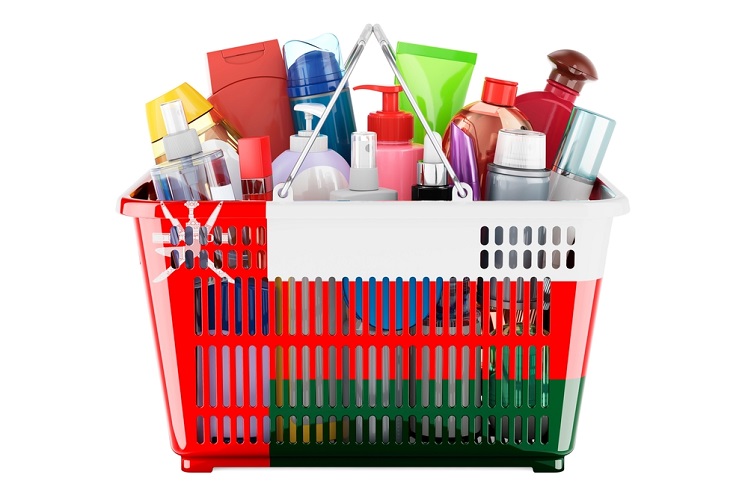
For electronic items, plastic acts as an insulator that prevents electric shock when you hold it. Not to mention that its less rigid nature can guarantee the safety of these products from impacts as it absorbs vibrations. In addition, they are also good heat insulators for cooking utensils, preventing your hands from burning. So, basically, plastics are safe for all purposes.
Unfortunately, they are toxic to our environment. The earth has been suffocated by plastic waste that fills up almost every aspect of our planet. They pollute land, soil, and water, exposing dangers to mankind and our ecosystem. Animals also suffer from ingesting microplastics floating in the ocean.
Not infrequently, we encounter reports that fishes and marine animals die from swallowing or being trapped by plastic waste. They can’t even reach maturity age because they quickly die because of hazardous waste of plastic.
And now we come to the question, “can we live without plastics?”. Well, that’s tricky and almost impossible since we’ve been forced to root to plastics. However, we can reduce plastic use by switching to biodegradable products. Instead of using plastic bags, you better invest in reusable shopping bags as you can use them repeatedly.
How about straws? You can choose bamboo or paper straws because they degrade quickly. Stainless steel straws are not a better option as the production consumes more energy than plastic ones.
What Type Of Plastic Is Toxic?
Are all types of plastics and their derivatives toxic? Not necessarily. Some are safe for food packaging, for instance, HDPE (High-density Polyethylene) and PP (Polypropylene). Bottled milk usually uses HDPE as its packaging, while PP is one of the safest plastics you can easily spot on all food product wraps. Both are considered safe as they do not leach toxic chemicals.
Of course, if there is a safe, there are also some that can cause health problems. One of the toxic plastics is PVC (Polyvinyl Chloride). It is one of the most harmful plastic products that contain BPA (Bisphenol A), phthalates, mercury, cadmium, lead (neurotoxicants), and dioxins. With such combinations of chemicals that can be toxic, exposure to PVC can trigger leukemia, hepatic angiosarcoma, hepatocellular carcinoma, and lung and lymphoma cancers.
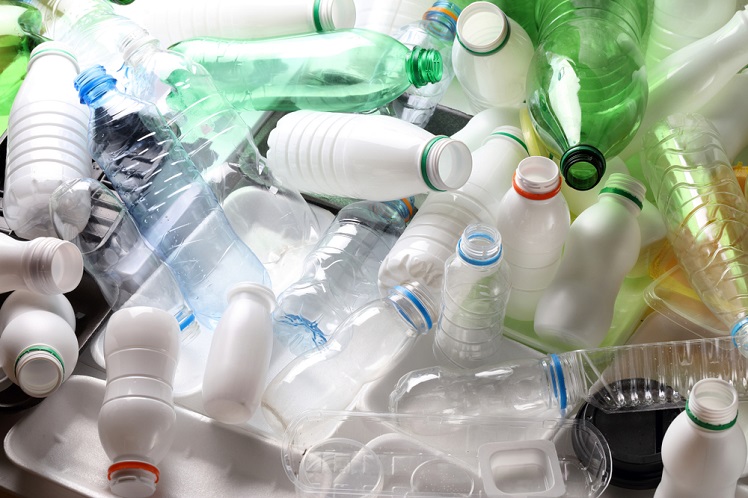
Moreover, people can be exposed to these chemicals when they consume contaminated water, take a bath, and breathe air polluted with vinyl chloride.
Sadly, fetuses, babies, and children are more susceptible to these chemicals because they are still developing their nerves, metabolism, and behavior. The contamination can damage their brain function. In addition, a 2010 study found that houses with PVC flooring caused asthma in children in Sweden. Vinyl flooring is also argued to increase the risk of autism.
Besides PVC, styrofoam or polystyrene is also one of the toxic plastics. Even the polystyrene manufacturing process occupies the fifth position, which produces hazardous waste. During the combustion process of this plastic, it will release hydrocarbons. With nitrogen oxides, they will form ozone which becomes a soil pollutant.
When they are sent to the landfill, they will be piled up with other waste, eventually generating heat. Due to this condition, styrofoam will leach out harmful chemicals to the surroundings, especially the soil. As time goes by, the contaminants can reach groundwater.
Despite its widespread usage, you must avoid styrofoam to pack your foods, especially oily and hot ones. High temperatures can stimulate the leaching out of chemicals from the packaging to your meals. Avoid using this plastic to wrap foods with high vitamin A as it can accelerate leaching.
How Toxic Is Plastic To Humans
After we know briefly about harmful plastics, now let’s discuss the impacts of toxic plastics for health and the environment. Despite its discovery being such a blessing, the detrimental effects of plastics are something we cannot ignore. How toxic are they to us humans? Let’s find out the answers!
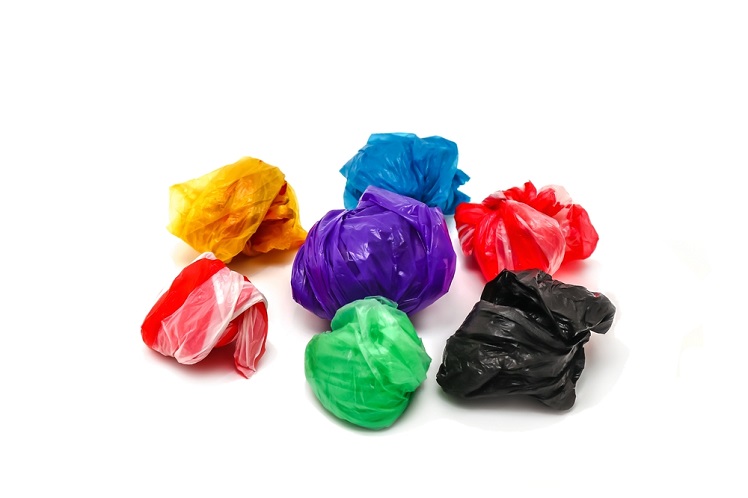
1. Chemical Toxic In Plastics
BPA (Bisphenol A) is one of the chemicals used in plastic manufacturing. They are also carcinogenic. Thus, plastics with this chemical are banned in many countries. The controversy over BPA toxic chemicals emerges since it significantly pollutes ocean life, especially for fishes. Most of them are sensitive to this moderately poisonous chemical.
Meanwhile, BPA also poses health threats for humans as its exposure may trigger high blood pressure and increase risks of cardiovascular diseases and diabetes mellitus. Even though it has moderate toxicity, BPA contamination in fetuses and children can lead to hyperactivity, anxiety, and depression.
In addition to BPA, PAHs (Polycyclic Aromatic Hydrocarbons) and PCBs (Polychlorinated Biphenyls) are toxic. They also have mutagenic and carcinogenic characteristics. Thus PAHs and PCBs are incredibly harmful to human health. These PAHs chemicals are naturally found in gasoline, crude oil, and coal. Meanwhile, PCBs are present in soil, water, air, and sediment. However, studies revealed that both are also present in plastic pellets.
Another research showed that polystyrene (styrofoam) debris in the ocean was one of the sources of PAHs contamination. The impact is very destructive for marine life as they are highly toxic. For humans, exposure to PAHs has adverse effects on reproduction and immunity. And worse, they may trigger tumors.
2. Temperature Does Plastic Release Toxins
To answer the question, “at which temperature does plastic release toxins?” we must understand what plastic types we are dealing with. In the case of PET (Polyethylene Terephthalate) bottles, the temperature of 25°C does not make them leach the antimony chemicals.
However, the higher the temperature, the faster the leaching process. Scientists discovered that the antimony release process occurs very rapidly at 50°C. Meanwhile, another study found a high concentration of antimony in bottled water stored at 65°C or around 150°F.
Meanwhile, reusable bottles that contain BPA will release their chemicals at 70°C. Furthermore, a study examining the leaching process in styrofoam cups showed similar results to BPA. After filling the cups with boiling water, the researcher observed them for about 60 minutes. It was mentioned that the styrofoam begins its leaching at 70°C, followed by a rapid trend at 100°C. On the other hand, there was no trace amount of chemicals in the water at 50°C.
3. How Long Will Earth’s Plastic Last?
Estimated around 8 MILLION tonnes of plastics arrive in the ocean yearly. And until now, that amount has accumulated about 5.25 TRILLION macro and microplastics. That means there are 46,000 pieces of plastic in every square mile of our sea. Even crazier, plastics have recently been found in the deepest marina trough, which reaches a depth of 11,034 meters (36.201 feet). Can you even imagine how horrendous that is?
The horror does not stop here. Scientists predict that our mother earth will be covered in plastics by 2050.
In this time being, plastics have smothered our coastal and marine life. What will happen when our oceans are not filled with water but full of plastics? Just so you know, plastics require hundreds to thousands of years to decompose, depending on the materials and structure. So, there is a high chance that the existing plastic waste can last forever if we do not put extra effort into reducing plastic use.
4. Chemicals Does Plastic Release In The Ocean
Heavy metals are one of the biggest concerns of our ocean. But, plastics are not better. There are several hazardous chemicals that plastic releases into the ocean, including Bisphenol A (BPA), PAHs, and PS (Polystyrene-based). BPA is harmful as it can disrupt animal hormones, causing troubles in cardiovascular systems, reproduction, growth, survival, and altered behavior. The effects strongly influence the early stages of development in fish.
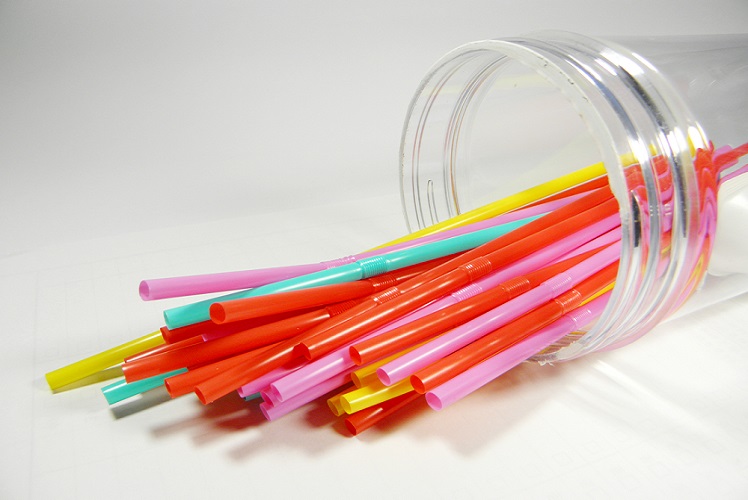
Meanwhile, PAHs pollution interfere with endocrine function and cause embryonic abnormalities, cardiotoxicity, and immunotoxicity. Furthermore, PS nanoplastics negatively affect zebrafish, decreasing heartbeat, spontaneous movements, and length.
5. Problems Caused By Plastics
A closer understanding of harmful effects of plastics is utmost important to improve their toxic footprint. Therefore, we have compiled some of the most common problems plastics cause for our environment:
- Plastic Never Goes Away (Non-Biodegradable)
Plastic pollution arguably poses a bigger threat to the plants and animals–including humans–who are based on land. This synthetic material takes up to 1,000 years to decompose, leaching technically toxic substances into soil and water. These particles then enter the food chain causing loss to life and property.
- Litter The Environment
Once used these disposable products go into landfills and end up littering the landscape. They blow down the street, flap from trees, clog storm drains or make their way out to sea. If you consider burning plastic as a viable option, then you may end up polluting the air with toxic fumes since they contain chemicals that are dangerous for not only the environment, but human health.
- Threat to Marine and Terrestrial Life
Many animals intake plastic products mistaking them for food & therefore die. What is worse is that the ingested plastic bag remains intact even after the death and decomposition of the animal. Thus it takes lives and still remains in the landscape to hunt for more victims.
- Diminishes Petroleum Products
Plastic Bag manufacturing is exhausting the precious non-renewable resources. To make plastics around 60-100 million barrels of oil is needed every year around the world. Surely the invaluable resource shouldn’t be wasted on producing perilous plastic products. Should it?
The list of harmful effects of plastics is non-exhaustive. Synthetic plastic is not only non-biodegradable but one of the major pollutants of the sea. Hence, it is our sole duty to shoulder responsibility for this problem which ultimately harms us.
A biodegradable alternative to plastic bags is hence the most viable option to save Mother Earth from escalating ecological catastrophes.
What Can You Use Instead Of Plastic?
Today, many alternative products to plastics are more environmentally friendly. So, there is no reason not to try to slowly switch from single-use plastic products. If you are confused about which one to choose, let us help you by listing some reusable and biodegradable goods you can use instead of plastics!
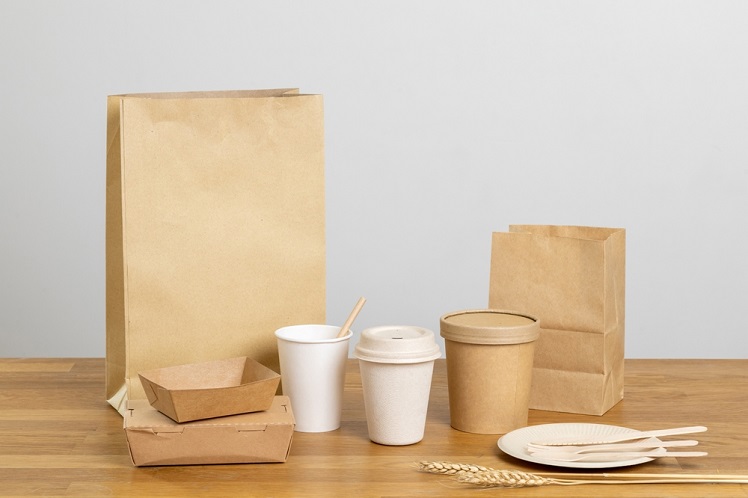
1. Straws
A 2018 study mentioned that around 8.3 BILLION straws contaminated our coast. And by the time we are writing this, the number may significantly increase. And for that reason, there is an urgent need to replace plastic straws with reusable ones. There are some you can try, including bamboo straws and paper straws. Some people also use stainless steel straws. But, the production of these straws consumed more energy. So, our experts suggest that they are not the best option.
2. Cups
Love to have a cup of coffee from your favorite coffee shops? Well, that’s OK. But, the cups and lids are toxic wastes for our earth. Just so you know, our planet has carried around 1.8 billion cups and 1.5 billion lids now. Hence, using them means you contribute to littering the environment. As alternatives, you can use porcelain mugs, paper-based cups with no lids. Besides, coffee is best enjoyed with biscuits. So, why do you need lids?
3. Cotton Buds
We are shocked to know that around 1.5 BILLION of cotton buds are produced every year. That is a lot! If you are those who love to remove earwax with the buds, how about replacing them with fluid ear washes? They are safer and effectively clean out your ears with no pain. And of course, they are environmentally friendly!
4. Cutlery
Usually, we are forced to use plastic cutlery in tha party or picnic. Instead of using them, you can bring your own. Nowadays, there are wider options of reusable travel-size cutlery you can easily take everywhere. And if you have takeaway orders, make sure to not include the cutlery to cut off the waste.
5. Bags
You have no idea that there are hazardous chemicals in plastic bags that not only share adverse effects on marine life, but also poison humans! So, it’s time to use plastic-free bags. Our experts recommend shifting to paper bags or reusable shopping bags made of woven. They are stylish and often come in different styles. Hence, no worries about being out of fashion!
What Will Happen If There Is No Plastic?
Even though plastics cause trouble to our environment, we cannot imagine life without plastics. Plastics contribute to almost every inch of human life. They are vital ingredients in making clothes, furniture, electronic devices, accessories, and many more! Their durability also makes it easy to pack food. Besides, these materials also feature excellent water resistance and oxygen barriers. So, they can minimize food damage due to physicochemical activities.

The distribution process becomes easier without worrying about microbial contamination and other physical contaminants. Even if exposed to sunlight or rain, plastic packaging most likely stands still with little to no damage. Therefore, you can have nutritious meals without concern about food poisoning.
Furthermore, plastics are good insulators to prevent electric shock in electronic devices and cable connections. Without plastics, you may find the equipment easily conducts dangerous electric currents. In addition, kitchen utensils also rely on plastics to prevent burning due to the heat of the stove.
So, life with no plastics means we have to buy more expensive goods with less durability and versatility. And, of course, it almost sounds impossible. On the other hand, we must still control the use of plastics. If we have access to replace them with other options, it will be wise to choose the alternatives.
Final Thoughts
All in all, plastics remain important to human life, despite being toxic to our environment. The best thing we can do is to reduce their use by shifting to reusable or biodegradable products. In addition to being harmful to mother earth, plastics share adverse health effects for humans and animals.
Hence, if we don’t have the awareness to reduce plastic use. So, it’s just a matter of time until the earth can’t stand it anymore and punish us with even more disastrous effects of plastic, the toxic ingredient.
Latest Post:
- Bioplastic Pros and Cons: An Unbiased Examination
- Eco-Friendly Bottling: Aluminum as the Sustainable Hero?
- How to Make Bioplastic from Rice: A Step-by-Step Guide
- Eco-Tips: How to Recycle Amazon Envelopes?
- What Does Compostable Mean?
Frequently Asked Questions (FAQ)
Is glass better than plastic?
People and scientists are divided when it comes to glass. Some think that glass is better than plastic, the toxic ingredient since it is easily recycled. In addition, glass does not leak toxic substances like plastics while bacteria decompose the material. On the other hand, glass requires a much longer time to degrade, around 1000 years, compared to plastic which takes 450 years.
In addition, the production of glass consumes a lot of energy and releases more carbon dioxide emissions. So, we cannot tell which one is the best as both have drawbacks.
How can I shop without plastic?
If you are wondering whether or not you can go shopping without plastic, the answer is you can! Here’s what you can do to save our Earth from toxic plastic waste:
- Shift your plastic products to reusable bags. There are wide options, such as cassava bags, corn-starch bags, and woven bags free from toxic chemicals in plastics.
- Buy fruits and veggies without plastic wraps. It is possible to do this if you buy them from a local market.
- Choose foods with reusable packaging, such as glass containers. Instead of ditching them, you can use the jars to keep your herbs, spices, sugar, or salt.
Which country uses the least plastic?
Rwanda became the only country in the world that declared itself a “plastic-free” country in 2009. Then, it raised a high concern over plastic problems and banned all plastic packaging and bags. Besides Rwanda, Norway and Germany are the two countries that recycle the most plastics, around 97%, and 66.1%, respectively.
Along with EU regulations, Germany also prohibited using single-use plastic cutlery, cotton buds, straws, and food packaging in 2021. Meanwhile, Norway has a unique system of managing taxes for plastic manufacturers. Treatment facilities to collect plastic are paid for by taxes from the company that produces the plastic.
Is silicone better than plastic?
Some argue that silicone can be an excellent alternative to plastic. It is because silicone contains more stable chemicals. Thus, it doesn’t possess harmful impacts like toxic plastic for health and environment. Unlike plastic chemicals, silicone is not degraded in the ocean. So, it is considered safer than plastics.
This material is generally used as an ingredient in medical gloves, cooking utensils, and many more.
How many years until the ocean is filled with plastic?
Experts predict that our beautiful ocean will be full of plastic by 2050. This news is extremely devastating as we may also fail the biodiversity of marine and coastal life. Researchers reveal that we can only have 10% of corals left if we continue to live like this without any significant changes, harming mother earth even further.
And as the emissions increase, we may permanently lose everything in 2300. Knowing these horrendous facts, we must pave a pathway to a sustainable lifestyle to save our planet.
